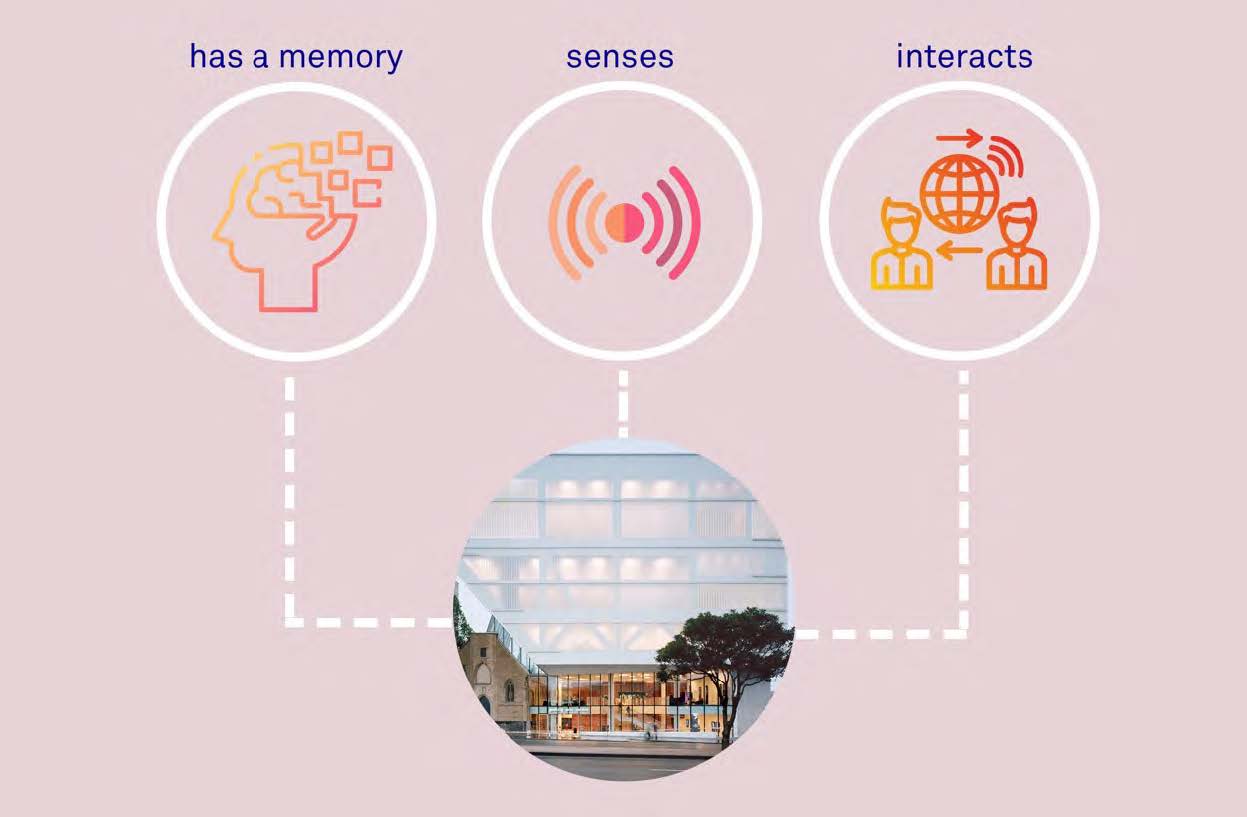Our research and innovation work focuses on how technology can help buildings become “intelligent” places that engage and interact meaningfully with humans and respond to COVID challenges. The 12-month long project encompasses the ideation, design, and development of four “proof of concept” intelligent building installations that can sense and understand human activities and support them with timely information and suggestions. Embedding the concept of “building as a living organism” and responding to COVID-19, these installations offer new experiences and redefine the GAC building’s services and operations. They have been trailed and evaluated, and we have analysed the feasibility of each installation for future work and implementation.
Arts Centre Building as a Living Organism
During this project, we have specially developed and applied the “Building as a Living Organism” Concept. This concept has three key features that help us to connect all the elements of our project work, namely that a building can meaningfully interact, possess and share its memory, and sense user sentiments and movement. This concept proposes that the application of relevant technologies can transform a building from an existence of passive physicality into a perceptive, sensitive, responsive, and intelligent ‘organism’ that can live and engage with visitors and users. This “living organism” approach will help to create new social, spatial, and experiential interactions between the building and its users by employing smart sensing and integrative technologies to enable alternative digital content, distribution channels, and consumption modalities.

Living Organism Metaphor
COVID-19 RESPONSE
The impacts of our innovative response to COVID-19 are highlighted in two ways:
• Contactless Connection
To minimise the physical interactions that might transmit the virus, we have provided several alternatives to enhance the connection between the GAC building and its users. Within the building, the users can obtain information anywhere anytime, and can choose to use their own mobile devices. Part of the information is also available across different venues for the users to access.
• Crowd Control
Our research also aims to provide a COVID response by improving the crowd control capabilities of the GAC building: first, via sensing, capturing, and analysing patron activity and movement to provide practical safety messaging; and second, via programming building systems to respond in real-time to changing conditions for effective operation.
